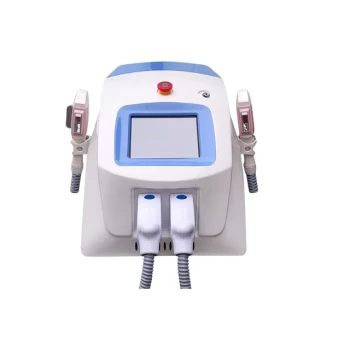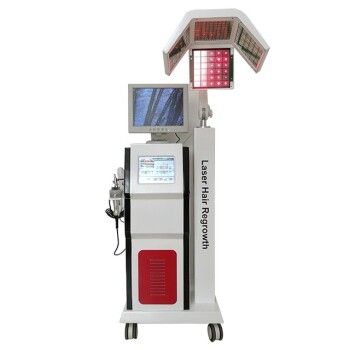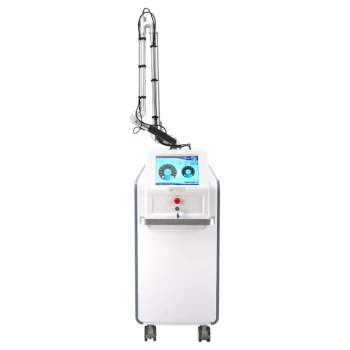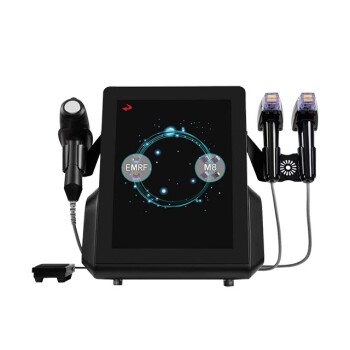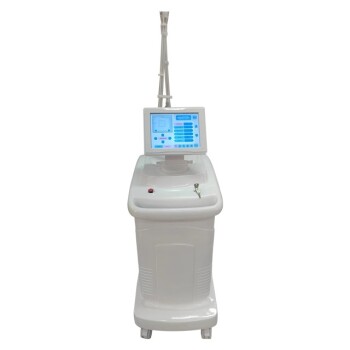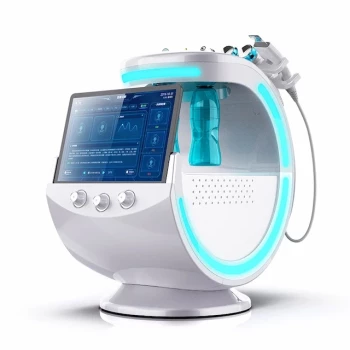Yes, at-home laser hair removal devices can work, but their effectiveness is limited and not comparable to professional treatments. They are designed to cause modest, gradual hair reduction rather than the more significant and lasting results seen from treatments performed in a clinical setting.
The core issue is a significant difference in power and technology. At-home devices are intentionally made less powerful for user safety, which means they deliver less effective results and lack the robust clinical studies that validate professional-grade equipment.
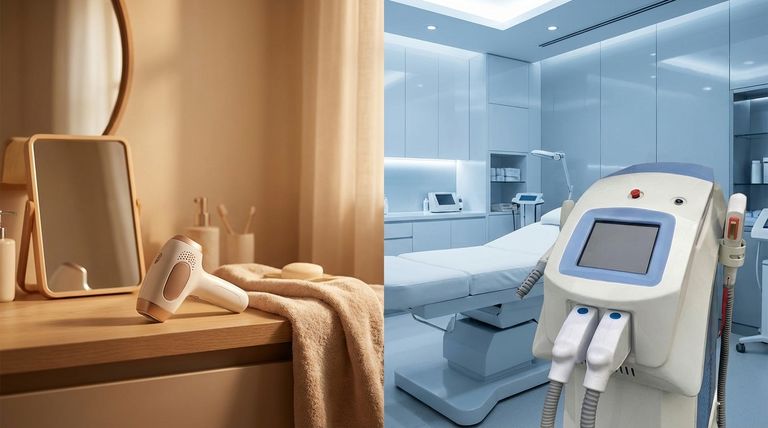
How At-Home Lasers Differ From Professional Treatments
To understand the difference in results, you must first understand the difference in the tools. The device you can buy online is fundamentally different from the one operated by a trained technician.
The Critical Factor: Power and Precision
Professional laser systems are high-energy devices. A trained technician can precisely adjust the laser's wavelength and intensity to target your specific hair follicle depth and color while accounting for your skin tone.
At-home devices, by contrast, operate at a much lower energy level. This reduction in power is a necessary safety feature to prevent users from accidentally burning or damaging their skin, but it directly limits the device's ability to effectively destroy the hair follicle.
"Permanent Hair Removal" vs. "Hair Reduction"
Even professional laser hair removal is classified by the FDA as "permanent hair reduction," not permanent removal. It aims to significantly reduce the number of active hair follicles.
At-home devices offer a much more modest level of reduction. Results often require more frequent and consistent long-term use to maintain, and the hair that does grow back may be finer and lighter.
The Lack of Comparative Evidence
Crucially, there are no large-scale clinical studies that directly compare the long-term effectiveness of at-home devices against professional laser hair removal. This means the claims made by manufacturers are not held to the same scientific standard as clinical-grade equipment.
Understanding the Trade-offs
Choosing between an at-home device and professional treatment involves a clear set of trade-offs between cost, convenience, and ultimate efficacy.
Cost vs. Efficacy
The most apparent benefit of a home device is the lower upfront cost compared to a full course of professional treatments.
However, you are trading cost for efficacy. While you pay less, you must accept a result that is likely to be far less significant and may require ongoing effort to maintain.
Convenience vs. Consistency
At-home devices offer the undeniable convenience of being used in your own home on your own schedule.
The trade-off is that achieving even modest results demands a high level of personal discipline and consistency. You are solely responsible for adhering to the treatment schedule over many months.
Safety and Skin Tone Limitations
Most at-home devices are only designed to work on a very specific combination of light skin and dark hair. The technology relies on the contrast between skin and hair to target the follicle.
Using these devices on darker skin tones can be ineffective and, more importantly, carries a higher risk of burns, discoloration, or scarring. Professional clinics have various types of lasers that can safely treat a much wider range of skin tones.
Making the Right Choice for Your Goal
The decision to use an at-home device should be based on a realistic understanding of what it can and cannot do.
- If your primary focus is significant, long-term hair reduction: Consulting with a professional clinic is the most effective and clinically proven path.
- If your goal is a minor reduction in hair density and you value convenience: An at-home device may be a suitable option, provided you have the right skin/hair type and are committed to consistent use.
- If you have a darker skin tone or light-colored hair: It is strongly advisable to seek professional treatment to ensure both safety and effectiveness.
Ultimately, the best choice aligns with your expectations, budget, and the level of results you wish to achieve.
Summary Table:
| Aspect | At-Home Laser | Professional Laser |
|---|---|---|
| Effectiveness | Modest, gradual hair reduction | Significant, long-term hair reduction |
| Power & Technology | Lower energy for user safety | High-energy, adjustable for precision |
| Ideal For | Minor reduction, convenience | Significant, lasting results |
| Skin Tone Suitability | Limited (best for light skin/dark hair) | Broad range (with appropriate laser types) |
Ready for significant, lasting results?
At-home devices offer convenience but cannot match the power and precision of professional-grade equipment. For medical aesthetics clinics and premium beauty salons seeking to offer clients the most effective and safe hair removal treatments, the right technology is key.
BELIS specializes in professional medical aesthetic equipment, providing powerful and reliable solutions to help your business deliver superior outcomes. Enhance your service offerings and ensure client satisfaction with technology backed by clinical evidence.
Contact our experts today to explore our professional laser hair removal systems and elevate your clinic's capabilities.
Visual Guide
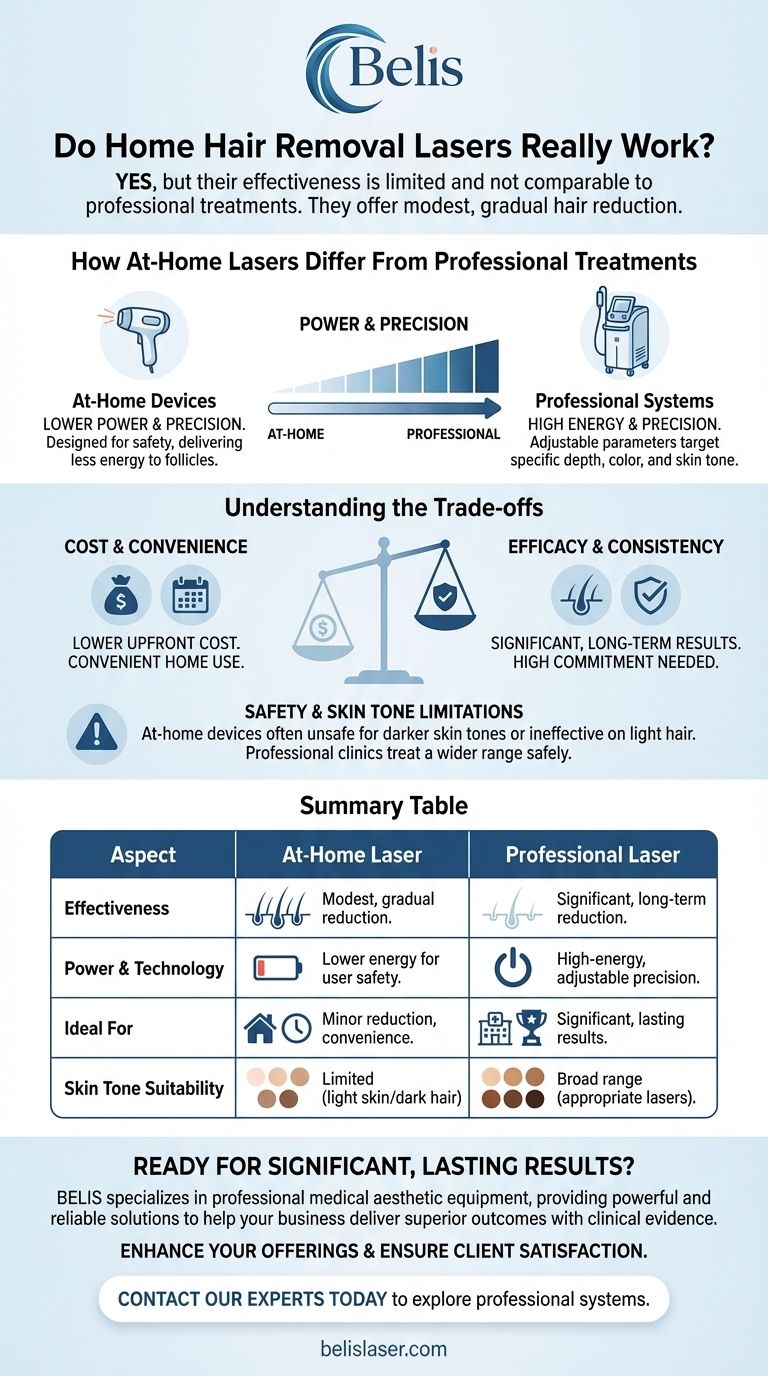
Related Products
- Clinic Use IPL and SHR Hair Removal Machine with Nd Yag Laser Tattoo Removal
- IPL SHR Hair Removal Machine for Permanent Hair Removal
- Trilaser Diode Hair Removal Machine for Beauty Clinic Use
- Diode Laser SHR Trilaser Hair Removal Machine for Clinic Use
- Diode Tri Laser Hair Removal Machine for Clinic Use
People Also Ask
- What is intense pulsed light good for? A Versatile Solution for Sun Spots, Redness, and Hair
- What are the negative effects of IPL? Understanding Risks for Safe Treatment
- Can I use my IPL machine every week? A Guide to the Optimal At-Home Treatment Schedule
- Are IPL machines safe? Understanding Skin Tone Compatibility for Safe At-Home Use
- How much do IPL treatments cost? A Guide to Investing in Clear, Smooth Skin

